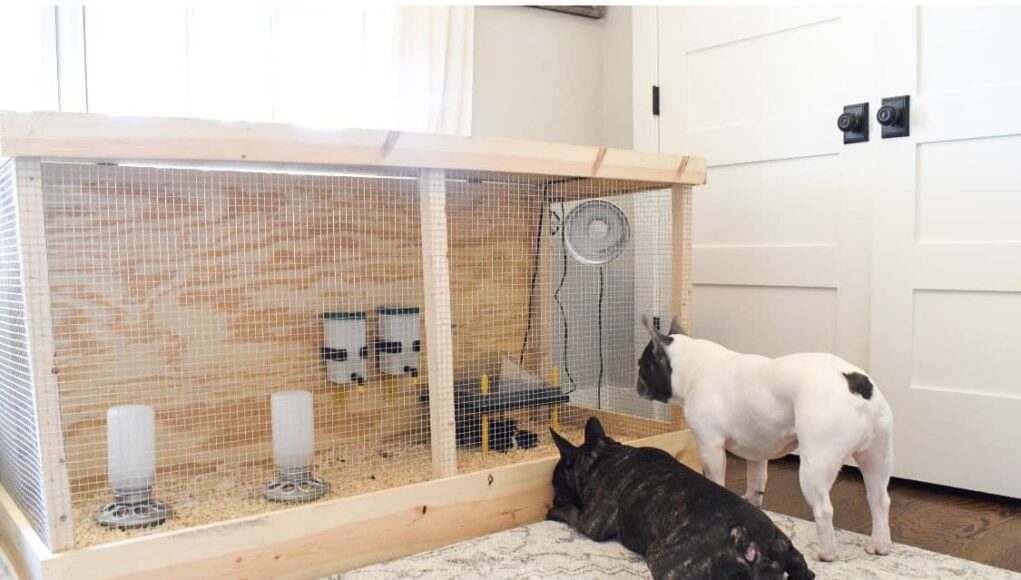Raising healthy chicks starts with creating a safe, dry, and comfortable environment for them. One of the most common challenges chicken enthusiasts face is preventing spilled water in brooder. This issue is crucial because wet bedding can lead to a host of problems, including mold growth, increased disease risk, and discomfort for the chicks. Addressing this concern early on ensures a healthier and happier flock.
In this article, we will explore various strategies to effectively manage and prevent water spills in your brooder. Whether you’re new to raising chicks or an experienced poultry keeper, these tips will help you maintain a dry, safe environment for your baby birds.

Understanding the Importance of a Dry Brooder
Why is it so important to keep your brooder dry? A dry brooder is essential for maintaining the health of your chicks. Wet bedding can harbor bacteria and create an ideal environment for mold, both of which can cause health issues for your chicks. Moreover, wet conditions can lead to hypothermia in young chicks, as they are unable to regulate their body temperature effectively.
Choosing the Right Waterer
The type of waterer you choose plays a significant role in preventing spilled water in brooder. Consider using a waterer that is specifically designed to minimize spills, such as a nipple waterer or a gravity-fed waterer with a small trough. These designs help control the amount of water available at any given time, reducing the chances of spills.
Elevating the Waterer
Placing the waterer slightly above the bedding level can help reduce spills. Elevating the waterer prevents chicks from kicking bedding into it or knocking it over. Use a stable platform or bricks to ensure the waterer remains level and secure.
Regularly Monitor and Adjust Water Levels
Frequent monitoring is key to ensuring your waterer is functioning properly. Check the water level daily and adjust as necessary to prevent overflow. This simple step can go a long way in preventing spilled water in brooder settings.
Using Spill-Proof Containers
Spill-proof containers are another effective solution. These containers are designed with features that minimize the likelihood of water spills. Consider investing in containers with weighted bases or those that lock in place to prevent tipping.
Prevent Overcrowding
Overcrowding can lead to more frequent water spills as chicks jostle for space. Ensure your brooder is spacious enough to accommodate all your chicks comfortably. For more information on ideal chick brooder dimensions, check out our detailed guide.
Utilizing Absorbent Bedding
Choosing the right bedding is crucial in managing moisture. Opt for highly absorbent materials such as pine shavings or paper towels. These materials can quickly soak up any spilled water, minimizing the risk of wet bedding issues. Learn more about the benefits of using paper towels in brooder setups.
Implementing a Cleaning Routine
Establishing a regular cleaning schedule is essential. Remove soiled or wet bedding promptly and replace it with fresh material. This practice helps maintain a dry environment and reduces the risk of bacteria and mold growth.
Creating a Safe and Secure Environment
In addition to water management, ensure your brooder is free from hazards that could lead to water spills. Secure all equipment and eliminate sharp edges or protrusions that chicks might bump into.
Consider Brooder Design
The design of your brooder can impact water management. Opt for a design that allows easy access to the water source while minimizing disturbance from chicks. Explore different chick brooder designs to find one that suits your needs.

FAQs
How often should I change the water in the brooder?
It’s recommended to change the water daily or more frequently if you notice contamination or spills. This ensures your chicks have access to clean, fresh water at all times.
What type of bedding is best for absorbing water spills?
Pine shavings and paper towels are highly absorbent and work well for managing moisture in the brooder environment. They help keep the area dry and comfortable for the chicks.
How can I tell if my brooder is too crowded?
If you notice chicks frequently jostling for space, water spills, or if the brooder appears cramped, it might be overcrowded. Ensure there’s ample space for each chick to move around comfortably.
For more tips on caring for your chicks, visit Purina Mills for comprehensive guides on chick care.
This article contains affiliate links. We may earn a commission at no extra cost to you.











